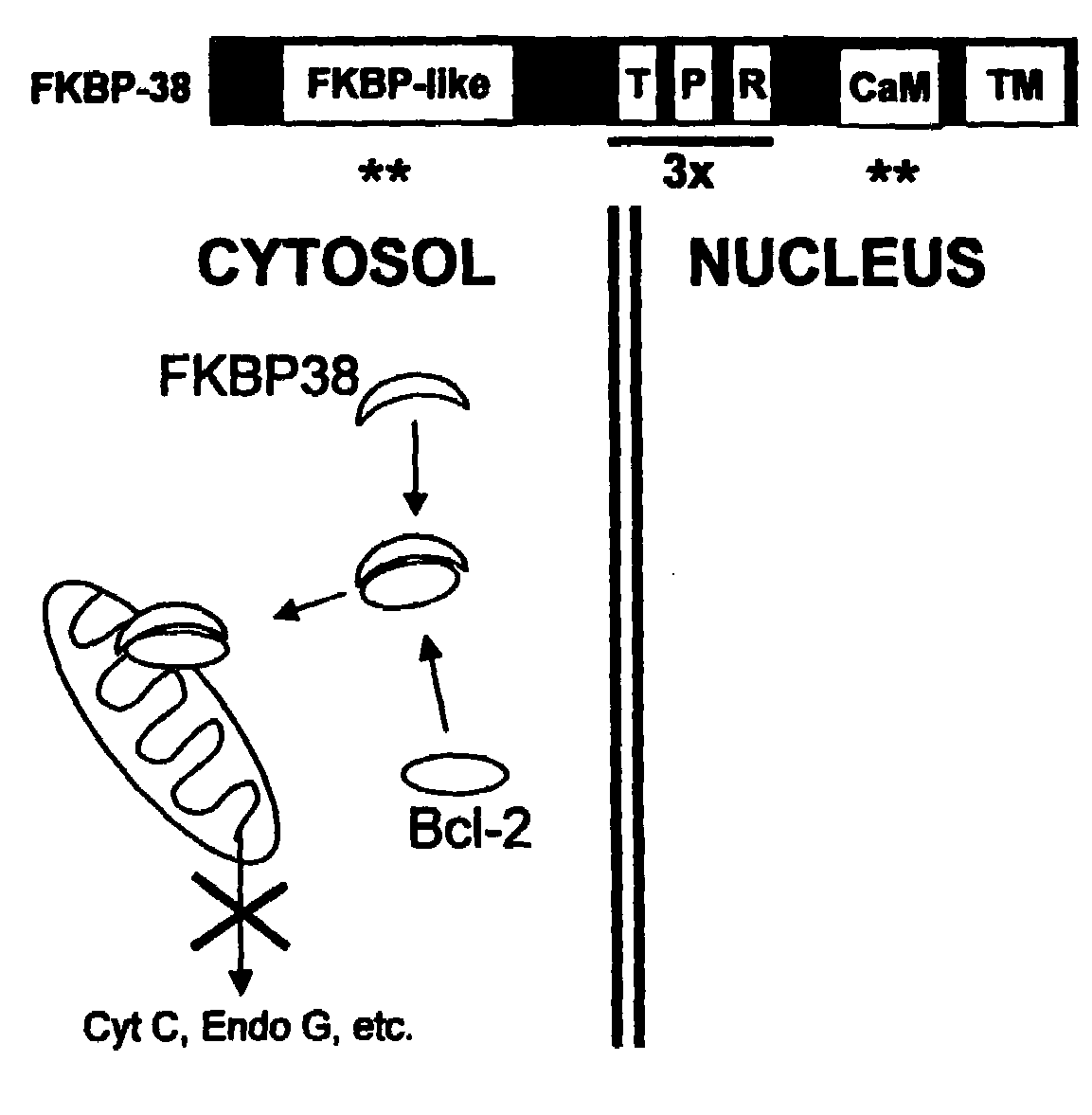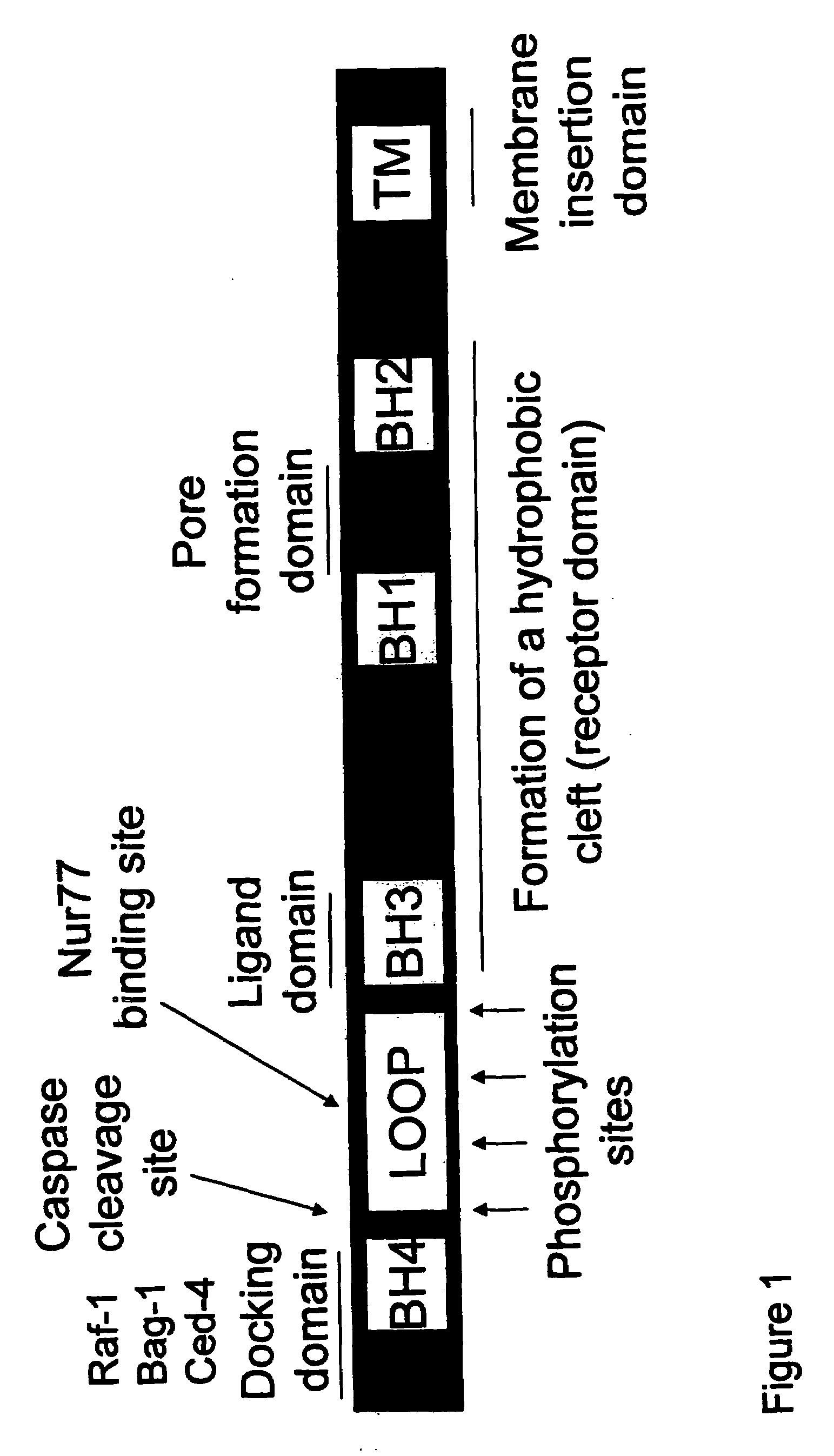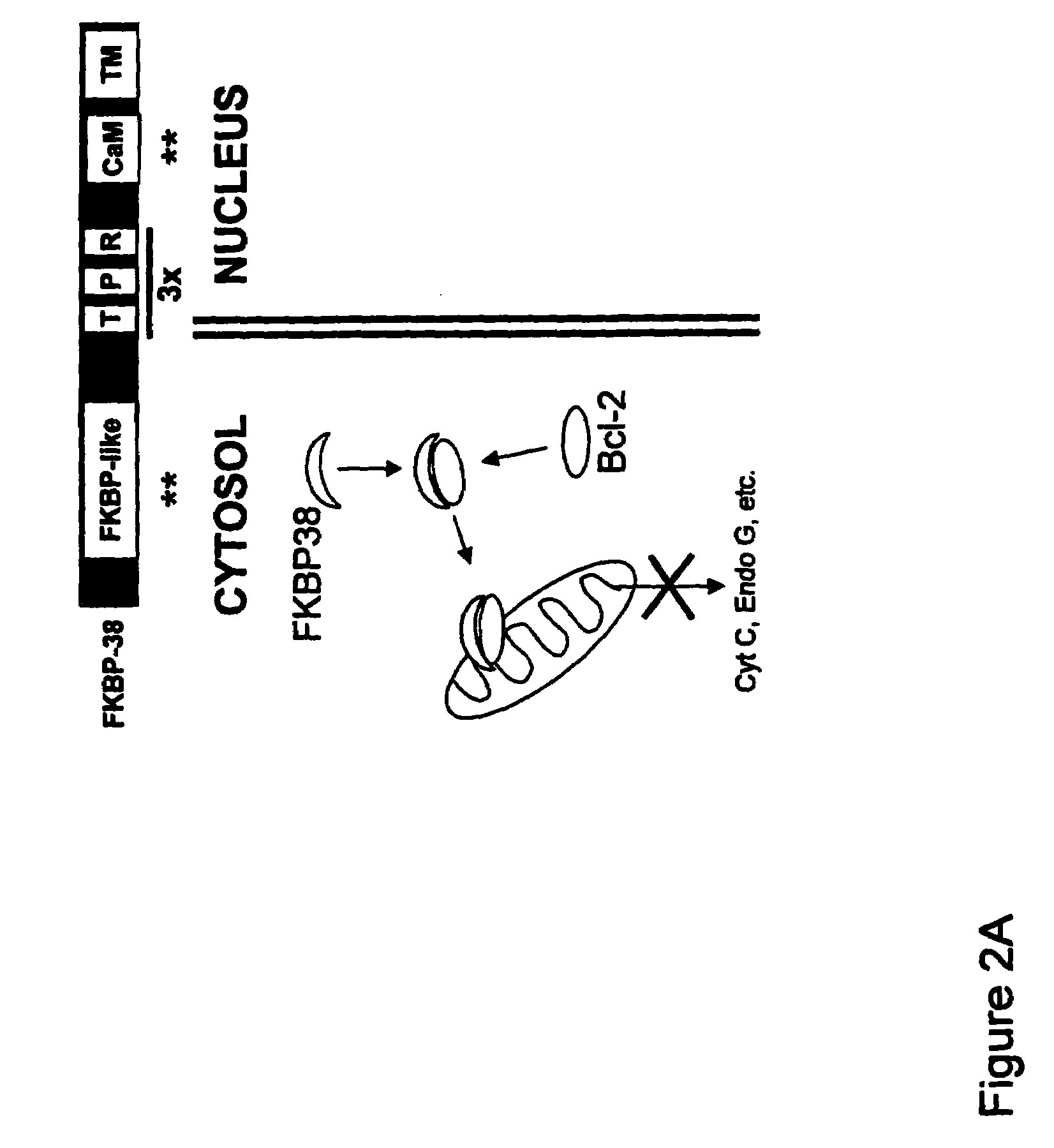Bcl-2 promoted cell death
a cell death and bcl technology, applied in the field of bcl-2 promoted cell death, can solve the problems of drug resistance development, limited efficacy of such approaches, and underscore the fatal outcome of leukemia, and achieve the effect of rapid and high throughput screening and rapid identification of lead compounds
- Summary
- Abstract
- Description
- Claims
- Application Information
AI Technical Summary
Benefits of technology
Problems solved by technology
Method used
Image
Examples
example
FKBP38 Removes Bcl-2 from the Nucleus
[0064]In the experiment shown in FIG. 7, PC12 cells were transiently transfected with Bcl-2 or Bcl-2ΔBH4 (a Bcl-2 deletion mutant lacking the N-terminal 30 amino acids, including the 11-25 BH4 domain) and the presence of Bcl-2 in the cysosolic, intranuclear and nuclear envelope protein faction assayed by western blot. Bcl-2 was localized in the cytosolic fraction (containing mitochondria) but not in the intra-nuclear fraction. There was a predominant presence of Bcl-2 at the nuclear envelope. Similarly, Bcl-2ΔBH4 was localized at the nuclear envelope and, at variance with Bcl-2, it was absent from the intra-nuclear or cytosolic fractions. The complete absence of cytosolic (mitochondrial) Bcl-2ΔBH4 suggests that Bcl-2ΔBH4 failed to bind FKBP38 altogether.
[0065]Bcl-2 transfected PC12 cells were stained for mitochondria (using MitoTracker) and nuclei (using DAPI) and then observed with a confocal microscope. Note that while Bcl-2 ringed the nucleus,...
PUM
| Property | Measurement | Unit |
|---|---|---|
| drug resistance | aaaaa | aaaaa |
| resistance | aaaaa | aaaaa |
| multi-drug resistance | aaaaa | aaaaa |
Abstract
Description
Claims
Application Information
 Login to View More
Login to View More - R&D
- Intellectual Property
- Life Sciences
- Materials
- Tech Scout
- Unparalleled Data Quality
- Higher Quality Content
- 60% Fewer Hallucinations
Browse by: Latest US Patents, China's latest patents, Technical Efficacy Thesaurus, Application Domain, Technology Topic, Popular Technical Reports.
© 2025 PatSnap. All rights reserved.Legal|Privacy policy|Modern Slavery Act Transparency Statement|Sitemap|About US| Contact US: help@patsnap.com



